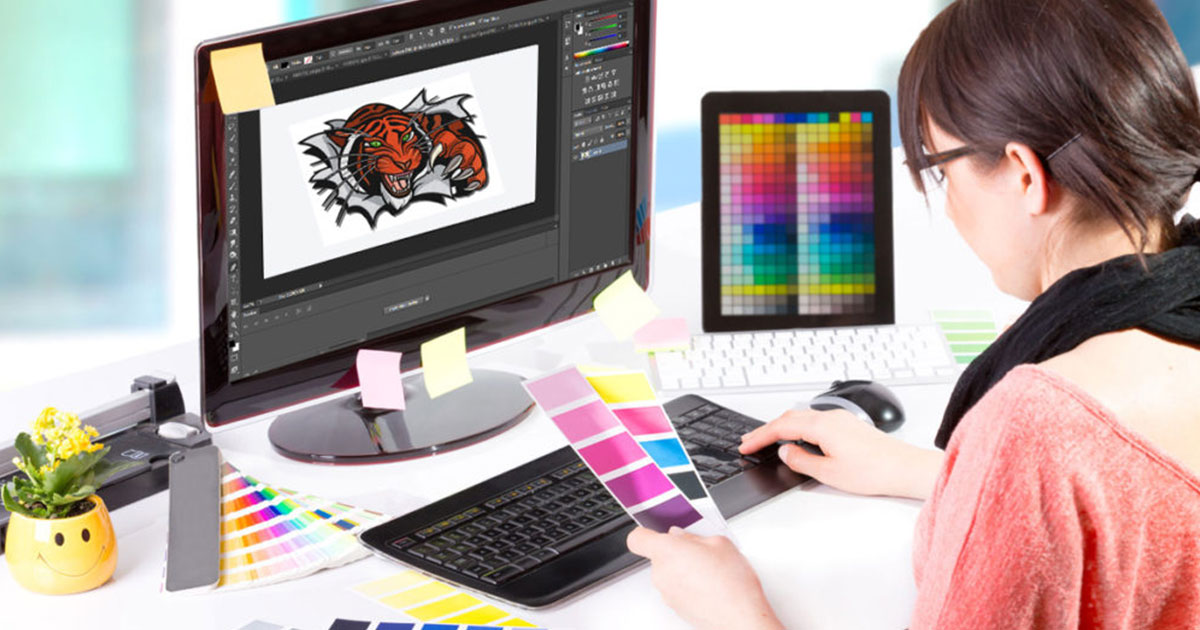Comprehensive Digitizing for Embroidery: From Design to Sew
Comprehensive Digitizing for Embroidery: From Design to Sew
Blog Article
Understanding the Embroidery Digitizing Process: Your Ultimate Overview
Embroidery digitizing is a meticulous craft that requires precision and proficiency to translate complex layouts into electronic formats for maker needlework. As craftsmens embark on this journey to master the needlework digitizing procedure, a comprehensive understanding of the basics sets the structure for quality.

Comprehending Embroidery Digitizing Fundamentals
Embroidery digitizing basics form the foundation upon which intricate layouts are translated right into machine-readable layouts for specific sewing. This first action in the embroidery digitizing process is important for guaranteeing that the final embroidered item is a loyal depiction of the initial layout. Recognizing needlework digitizing fundamentals involves grasping key principles such as stitch kinds, stitch direction, thickness, rug, and pull compensation.
Sew types play a vital role in figuring out the visual and textural end result of the embroidered style. By choosing the appropriate stitch kind, whether it be satin, fill, or running stitch, digitizers can attain the desired effect and enhance the total high quality of the embroidery. In addition, stitch direction affects the flow and measurement of the style, while density establishes the spacing and protection of the stitches.
Moreover, rug stitching supplies stability to the layout by securing the textile and stopping distortion during the needlework process. Draw compensation is one more important factor to consider to combat the natural tendency of textile to contract when sewn. Mastering these needlework digitizing basics is essential for creating professional-quality stitched items.
Choosing the Right Digitizing Software Application
Picking the suitable digitizing software program is a crucial choice that dramatically impacts the efficiency and high quality of the needlework digitizing procedure. Digitizing for Embroidery. When picking the appropriate digitizing software, it is vital to take into consideration variables such as the complexity of designs you prepare to produce, the user-friendliness of the software program, the degree of consumer assistance offered, and the compatibility with your embroidery machine
There are various digitizing software options available on the market, ranging from basic programs for novices to advanced software for professional digitizers. Some popular selections consist of Wilcom EmbroideryStudio, Hatch Needlework Software Application, and PulseID. These software provide a vast array of tools and attributes to aid you develop detailed layouts with simplicity.
Before choosing, it is advisable to discover the various software application options via cost-free tests or demonstrations to determine which one ideal matches your demands. Furthermore, checking out reviews and looking for suggestions from skilled digitizers can provide beneficial understandings into the toughness and weaknesses of each software plan (Digitizing for Embroidery). By very carefully evaluating your requirements and contrasting the functions of various digitizing software application, you can make an informed selection that enhances your needlework digitizing process
Digitizing Devices and Methods

Optimizing Design Settings for Embroidery
Understanding the complexities of layout settings is essential in accomplishing optimum results in the needlework digitizing procedure, building upon the structure laid by recognizing digitizing tools and methods. When optimizing style setups for needlework, it is vital to take into consideration factors such as stitch kind, thickness, underlay, pull compensation, and enrollment. Enrollment settings align various components of the design accurately, preserving total design integrity.

Troubleshooting Common Digitizing Issues
When encountering typical digitizing concerns during the embroidery procedure, it is necessary to recognize the origin and apply efficient options promptly. One typical trouble is stitch thickness issues, where stitches may be also dense, triggering the material to tighten, or too thin, resulting in spaces in the layout. Adjusting the stitch density settings official statement in the digitizing software program can aid resolve this problem.
One more constant challenge is thread breaks during the embroidery process. This can happen as a result of numerous factors such as inaccurate stress setups, plain needles, or making use of low-grade thread. Ensuring proper maintenance of the embroidery maker, consisting of normal needle adjustments and stress changes, can decrease the event of string breaks.
Moreover, design registration errors can lead to misaligned aspects within the needlework style. Inspecting the style positioning in the digitizing software application and making required modifications before stitching can help in avoiding this issue. By resolving these common digitizing issues quickly and successfully, you can make sure a smoother needlework process and premium completed products.
Verdict
In verdict, click over here now understanding the needlework digitizing process requires a strong understanding of the essentials, the ideal option of software application, and knowledge of devices and methods. Enhancing design settings and troubleshooting usual digitizing concerns are vital steps in ensuring high-grade needlework results. By following these actions carefully, one can accomplish accuracy and effectiveness in the digitizing process.
Report this page